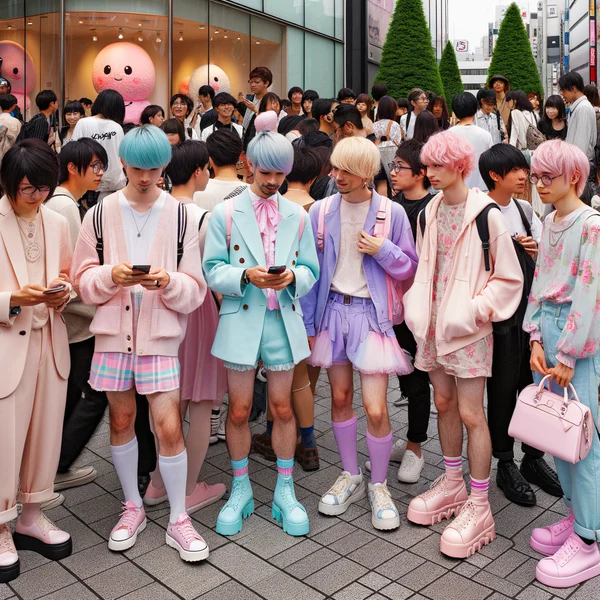
Herz (1999) wrote that “Pokémon are hyperbolically cute” in the New York Times after Nintendo won the game market. The words “cute”, “loveable” or “adorable” in Japanese all mean the adjective “kawaii” (Bainbridge, 2014). Kawaii culture belongs to Japanese popular culture and has become a trend since the 1970s (Bainbridge, 2014).

Tobin (2004) mentions that Kawaii culture is related to qualities of sweetness, dependency, and gentleness and it transcends gender norms. He says that while cuteness is traditionally connected with females, kawaii culture expands this notion to males. “Kawaii” could also be used to describe both men’s personalities and appearances without exclusively defining them as feminine (Tobin, 2004). This explains why Pikachu’s appeal isn’t limited by gender. Its cuteness attracts both girls and boys, embodying a universal charm.
Allison (2006) expresses that characters in Pokémon are designed to be cute and sold by an aura of “kawaii” (p.16). It is one of the Pokémon Company’s marketing strategies. She says that the "kawaii trend" contains “cute goods” and “cute characters” (p.205). Cute goods make consumers feel close to characters and add intimacy (Allison,2006).

However, Allison highlights that “Cute characters are defined not just by their physical attributes alone (big head, small body, huge eyes, absent nose) but also, and more importantly, by the relationships people form with them” (p.205-206). It shows the deep emotional connections and interactions between Pokémon fans and characters. In Pokémon games, players act as the creatures’ trainers and experience adventures with Pokémon. During the process, it is possible for fans to develop companionships and memories with characters that extend beyond the digital game. Therefore, kawaii culture lies not only in physical cuteness but in the meaningful relationships that fans have.
Allison, A. (2006). Millennial Monsters: Japanese Toys and the Global Imagination. University of California Press.
Bainbridge, J. (2014). “Gotta Catch ‘Em All!” Pokémon, Cultural Practice and Object Networks. IAFOR Journal of Asian Studies, 1(1). https://doi.org/10.22492/ijas.1.1.04
Herz, J. C. (1999, September 2). Digital Theme Park where pokemon roam. The New York Times. https://www.nytimes.com/1999/09/02/technology/game-theory-digital-theme-park-where-pokemon-roam.html
Tobin, J. (Ed.). (2004). Pikachu's global adventure: the rise and fall of Pokémon. Duke University Press.
Julia, G. (2023). Passion Kawaii: we tell you all about this trendy pop culture. [Online image]. In Hopono.com. https://www.hopono-shop.com/en/blogs/le-journal/passion-kawaii-we-tell-you-all-about-this-trendy-p/
Kawaii culture interact with gender norms and roles in Japan. [Online image]. (2023). In Youeni.com. https://cdn.shopify.com/s/files/1/0694/6747/2189/files/Kawaii_culture_interact_with_gender_norms_and_roles_in_Japan_600x600.png?v=1698325663